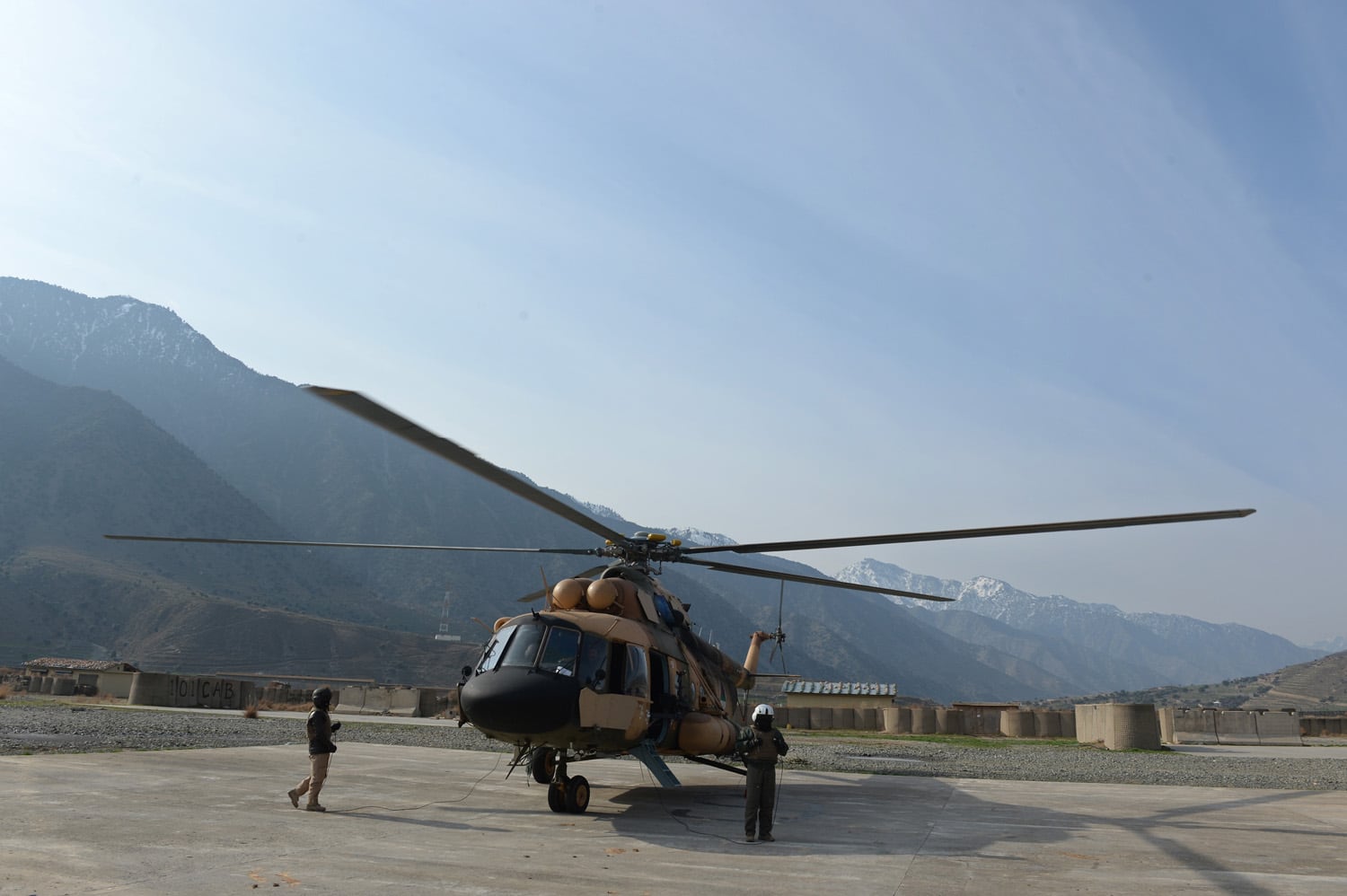The Afghan Air Force dropped its first laser-guided bomb in combat on a Taliban compound in Farah province, Afghanistan, on March 22.
The pilots dispatched a GBU-58 — a 250-pound laser-guided bomb — from an A-29 Super Tucano light-attack aircraft out of Kabul Air Wing’s Kandahar detachment. The Afghan Air Force has 12 A-29s, made by Sierra Nevada Corp. and Embraer, but will own a total of 25 by 2019.
While the pilots had both guided and unguided bombs, they opted for the laser-guided munitions to avoid collateral damage, given the target’s close proximity to civilians, according to a statement from Resolute Support Headquarters.
“The AAF has demonstrated again and again that their pilots, using the A-29 and the skills they have learned from our advisors and perfected through combat experience, that they can drop non-precision weapons within 10 meters of their targets,” said Brig Gen. Phillip Stewart, Train Advise, Assist Command—Air chief. “There are certain targets that require laser guided bombs and the AAF has shown it can accomplish that task now as well.”
Resolute Support reported that the bomb resulted in a direct hit along the route of a major Afghan National Army clearing operation.
The Afghan pilots gained their own airstrike capability more than two years ago, “first with the MD-530 attack helicopter in August 2015, followed by the A-29 Super Tucano in April 2016,” according to Resolute Support. Afghan pilots now fly “around 100 sorties each day, and around 10 percent are strikes.”

In 2001, Afghanistan’s Air Force was practically nonexistent, and NATO has spent billions of dollars to raise, train and equip the service.
Nurturing these capabilities is one of the keys to success in the country, according to Air Force Brig. Gen. Lance Bunch, director of future operations for Resolute Support.
“Key pieces that you're seeing is that the Afghan Air Force itself, one of the more lethal organizations they have, and one that we're looking to triple in size by 2023, is conducting significantly more air operations in direct support of the [Afghan National Defense Security Forces] on the battlefield, to the tune of 500 more sorties this year than they did the year before,” Bunch said at a December 2017 news conference.
The role that Resolute Support advisers played in this operation wasn’t made immediately clear. Regardless, U.S. forces in the country held up the accomplishment as proof of a growing Afghan independence.
“The Afghan pilots have learned their trade during combat and our advisors have expanded their skills in a deliberate step by step approach increasing the Afghan Air Force capability, and this recent laser guided bomb strike is an example of the success of the AAF and TAAC-Air’s efforts,” Stewart said. “The Afghan pilots do their jobs very well and they can do it in any part of the country.”
Air warfare reporter Valerie Insinna, of Defense News, contributed to this report.
Kyle Rempfer was an editor and reporter who has covered combat operations, criminal cases, foreign military assistance and training accidents. Before entering journalism, Kyle served in U.S. Air Force Special Tactics and deployed in 2014 to Paktika Province, Afghanistan, and Baghdad, Iraq.




